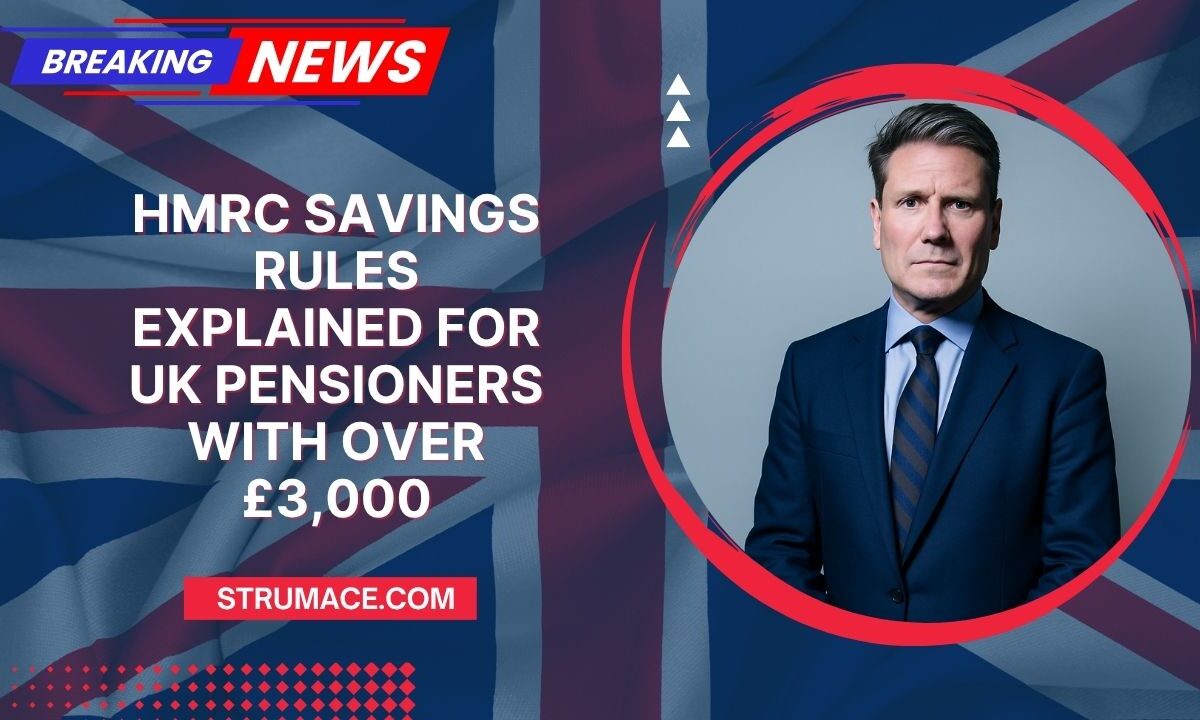Many UK pensioners with over £3,000 in savings may now receive formal HMRC notices. These communications typically relate to interest earned, tax‑free allowances, and benefit eligibility.
With evolving systems and rising interest rates, it’s essential to understand why you might be contacted, what it means, and how to respond effectively.
Why HMRC Is Sending Notices
- HMRC now receives direct data from banks and building societies about interest earned. This automation increases the likelihood of HMRC issuing notices to individuals whose savings generate interest beyond certain thresholds
- The £3,000 savings mark isn’t an official tax threshold, but a practical marker. With elevated interest rates, modest savings can quickly produce taxable amounts, triggering HMRC review
Key Tax Allowances and Rules
| Allowance Type | Details |
|---|---|
| Personal Savings Allowance | £1,000 interest tax-free (basic rate), £500 (higher rate), £0 (additional) |
| Starting Rate for Savings | Up to £5,000 tax-free interest if total income is under ~£17,570 |
| Impact of Frozen Allowances | Rising interest but fixed allowances lead more savers into tax liability—millions affected |
| Future Reporting Changes | From 2027, banks must collect NI numbers to match savings data to taxpayers, streamlining tax collection |
What to Expect in an HMRC Notice
- A “Simple Assessment” letter detailing interest reported, tax due, and payment deadlines might arrive, especially for pensioners with interest above their allowance
- These could be informational, or prompt action—such as confirming figures, adjusting tax codes, or paying owed tax.
How to Respond
- Read the notice carefully and respond promptly. If required, payments or confirmations must be made by the deadline (commonly 31 January)
- You might avoid self-assessment if HMRC handles it via PAYE adjustments; otherwise, you may need to register for Self Assessment.
Can You Be Taxed Immediately?
- Not always. If your interest stays within your allowances (PSA, starting rate), no tax is due.
- If it exceeds, tax may be taken via tax code changes or assessed through Self Assessment, depending on your situation
Managing Your Savings
- Use ISAs (up to £20,000/year)—interest is completely tax-free and does not trigger notices
- Track interest across all accounts to anticipate thresholds.
- Consider splitting savings between ISAs and regular accounts to minimise taxable income.
- Stay informed to avoid unexpected tax charges or surprises on your pay packet
If you’re a UK pensioner with savings over £3,000, HMRC may send notices due to rising interest rates and automated data sharing.
Understand your entitlements—like the Personal Savings Allowance and starting rate for savings—and respond promptly if contacted.
Using tax-efficient vehicles like ISAs and keeping accurate records will help protect your finances and peace of mind.
FAQs
Will every pensioner with over £3,000 in savings receive a notice?
Not necessarily. The £3,000 mark is a practical trigger for monitoring, but whether you receive a notice depends on actual interest generated and allowances.
What allowances apply before interest is taxed?
Basic-rate taxpayers can earn £1,000 of tax-free interest, higher-rates £500. Low-income individuals may also apply a £5,000 “starting rate” total. ISAs remain fully exempt.
How should I respond if taxed interest exceeds my allowance?
Expect either a tax-code adjustment for PAYE or a Self Assessment notification. Respond promptly to notices, and keep records of your interest and any correspondence.
